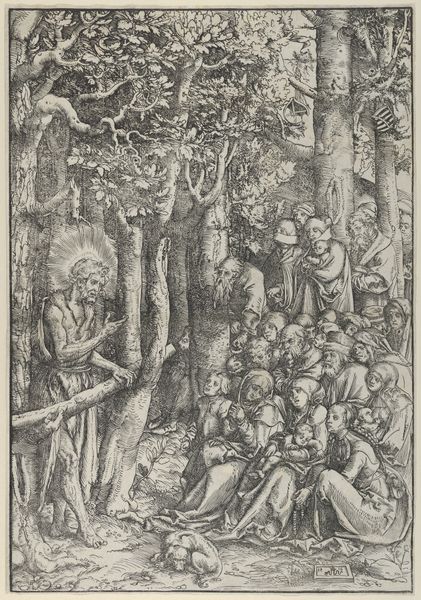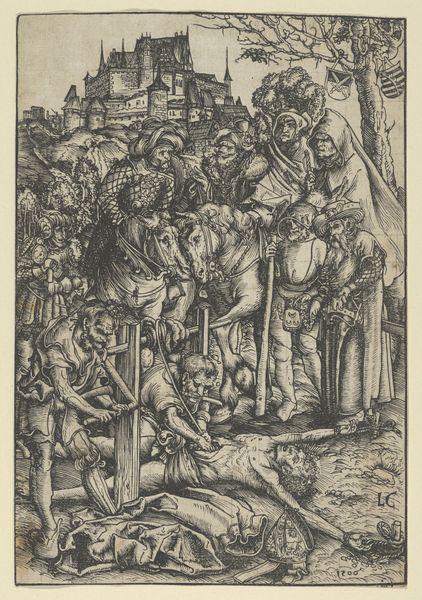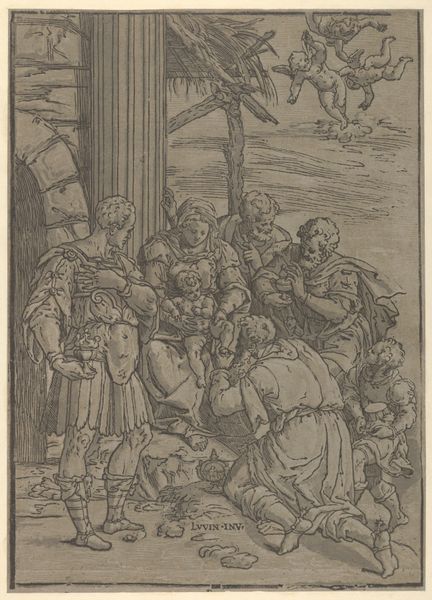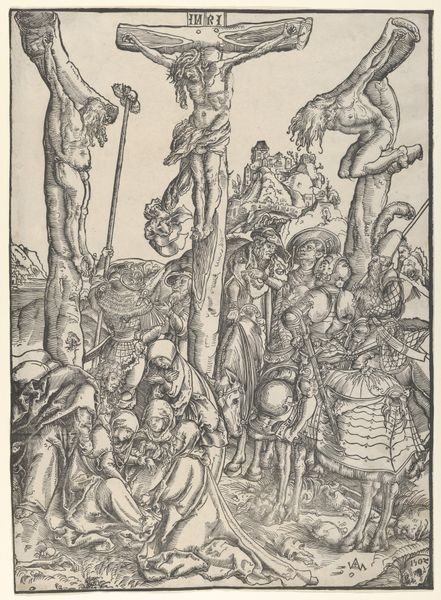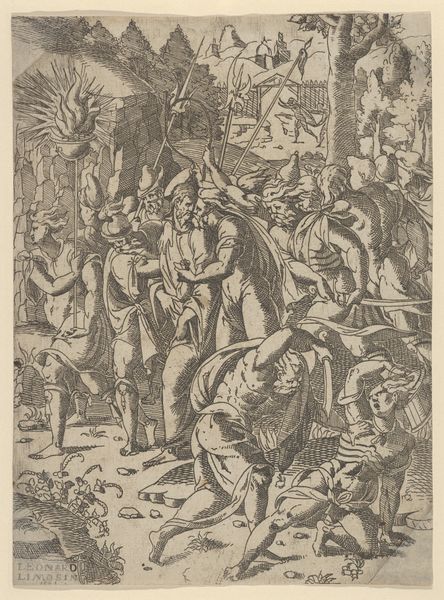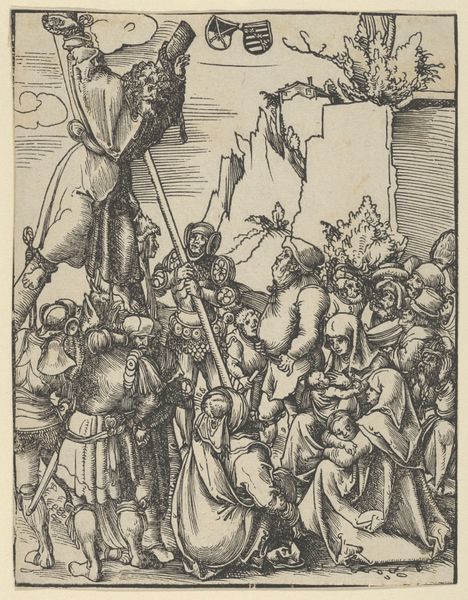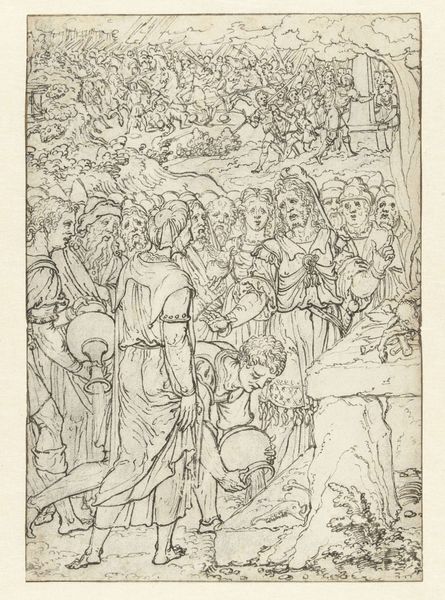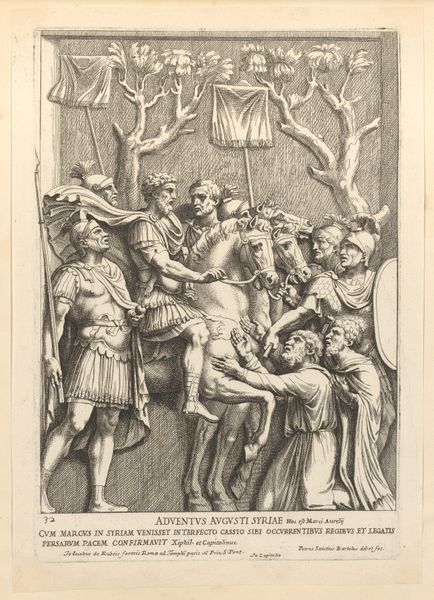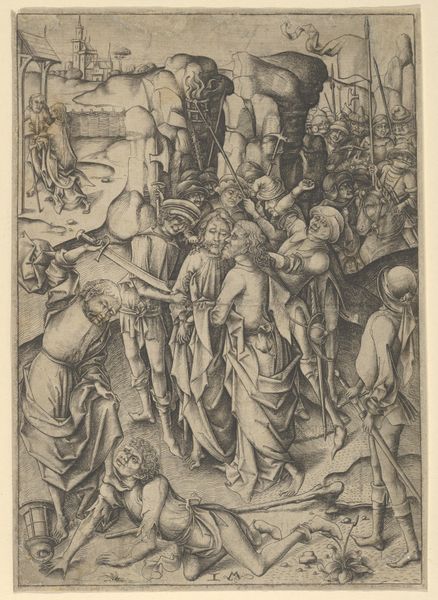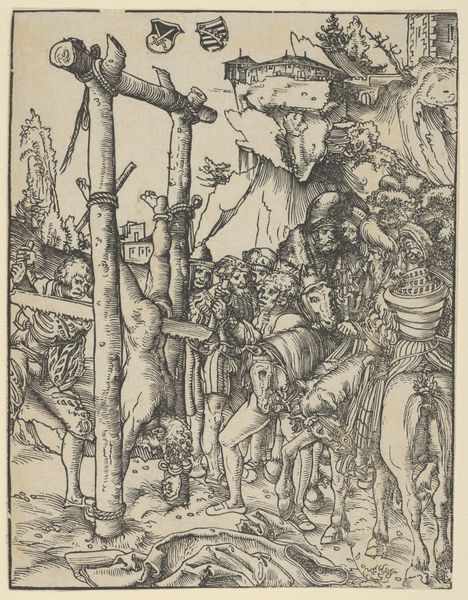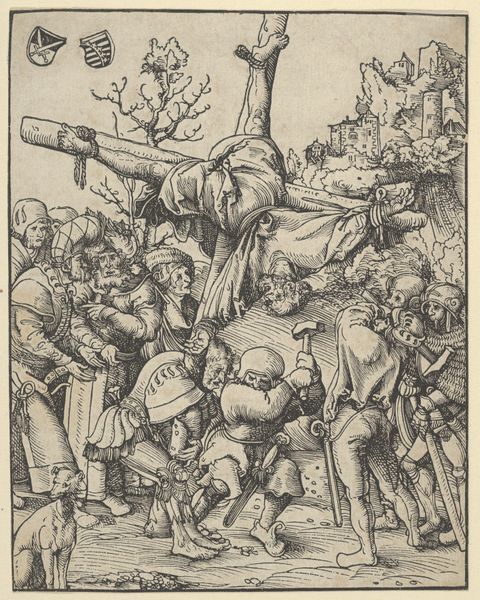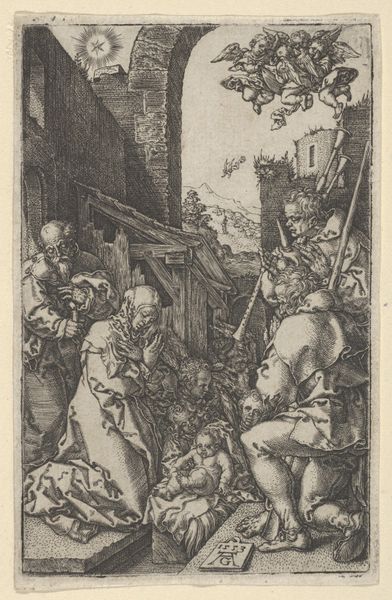
drawing, print, woodcut
#
drawing
#
narrative-art
# print
#
figuration
#
soldier
#
woodcut
#
men
#
history-painting
#
northern-renaissance
Dimensions: Sheet: 10 3/16 × 7 1/8 in. (25.8 × 18.1 cm)
Copyright: Public Domain
Curator: Look at this chilling woodcut, "The Martyrdom of St. Barbara," created by Lucas Cranach the Elder sometime between 1472 and 1553. It resides here at The Metropolitan Museum of Art. Editor: It's… stark. The high contrast amplifies the violence of the scene. The composition is also quite dense. You can sense the physical tension right before the beheading. Curator: Exactly. Cranach's meticulous woodcut technique emphasizes the textures – the soldiers' armor, the flowing robes, even the jagged outline of the clouds above. The act of carving the wood itself feels relevant. This wasn't painting for wealthy elites, it was an image produced in multiples, affordable for the masses, acting as a visual shorthand for religious devotion. Editor: Right, but devotion comes at a cost here, doesn't it? St. Barbara kneels, head bowed, moments before her execution. Her story, steeped in patriarchal violence, underscores how female resistance to oppressive religious dogma was met with brutal suppression. Even her own father, the story goes, ultimately executed her after her conversion. Curator: And notice the faces of the onlookers. There's curiosity, boredom, even a kind of detached professional interest. The material conditions made creating and reproducing images more accessible. Still, power and its use, were largely controlled by those at the top of society. Woodcuts like these offered glimpses of potential challenges to established norms. Editor: Precisely. Cranach depicts not just religious history, but also societal power dynamics. It reveals the relationship between belief, gender, and political authority in the midst of social upheaval. St. Barbara, as an allegorical figure, allows a space for recognizing intersectional resistance. Curator: Absolutely. When considering the legacy of this print and others like it, we begin to unravel a complex relationship to the means of their production. It prompts considerations about its access, its circulation and how the materials used impact the accessibility and subsequent reception of ideas presented. Editor: This work is much more than just an iconic symbol from religious stories, its testament resides in the strength and resistance exhibited by female historical figures, despite facing suppression under political norms or institutions, that ultimately allows modern intersectional theory and other philosophical doctrines a conceptual ground. Curator: It’s quite impressive, considering the level of visual density achieved through woodcut during that period. Editor: Yes. An important and enduring legacy indeed.
Comments
No comments
Be the first to comment and join the conversation on the ultimate creative platform.
